Guest Post Celebration!
June marks the 12th Anniversary of my blog: Art is Truth. Each year I try to do something to give back to the blog community and celebrate art and the connections it gives us. This year, I’ll be posting guest articles from readers each week. I hope you’ll enjoy reading about Mary’s workshop experience and viewing her art below!
By Rick Rogers, ISAP, ASA, SWCA
“The Three disGraces Exaggeration Disinformation and Obfuscation ” ©Rick Rogers Mixed Media on cradled birch panel 12″x18″ 2019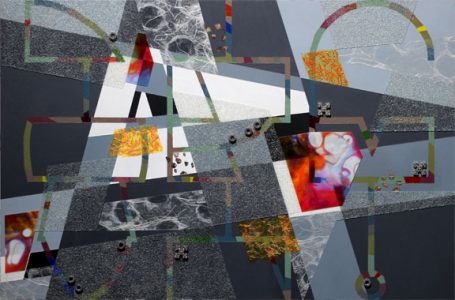
I believe wholeheartedly that all artists that progress in their practice have to experiment to do so. For me experimentation has been a great way to add some variety with novel effects and at the same time a great way to loosen up my painting and take advantage of some of the beautiful random results that can occur while making art.
On Perfection
I’ve always been a bit of a perfectionist and many of you will already know from personal experience that sometimes that predilection can result in art that feels a bit sterile. Many artists and art followers and collectors say that they want to be able to see the hand of the artist in the work. I initially interpreted this as meaning that they want to be able to identify that an artist was actually manipulating a tool to make a mark. They wanted to see a brush stroke or a lump of thicker paint left visible in the wake of the artist’s movement of a knife.
“Justifying the Means” ©Rick Rogers Mixed Media (acrylic, polyester fabric and polydimethylsiloxane) on cradled birch panel, 24″x24″ 2017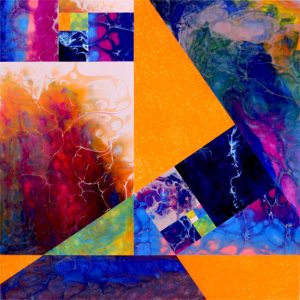
Over the years, I’ve come to believe that it is more subtle and broader than that. Contrast is a fundamental concept that we all have to explore, adjust, and balance in our work. And like the more commonly discussed contrasts – value, hue, pattern, et cetera – there is beauty to be found in the contrast between the perfect and the imperfect.
There is a bit of visual poetry generated by a blemish on the support, or in the random texture of a layer of gesso. These things help us to appreciate the composition that the artist has created even more. When we get up close to a work and see some of the underlying imperfections, and the incomplete record of the artist’s work on the support as they progressed towards the result, we can appreciate their efforts even more.
Getting Deliberate
Even in the deliberate mark-making stage of a painting, imperfections are often valuable assets. Very early in my art-making I enjoyed creating effects that could be used in painting and printmaking to inject a bit of a surprise into the work. I still enjoy using isopropyl alcohol, metallic powders, and oil-based additives with my acrylics. Often, the hard part with these kinds of effects is being able to predict how they might result and finding the best way to make use of them. Repeated experimentation and innovation is the key to gaining some level of control over a technique, especially when the media involved are difficult to control.
“Consonance and Dissonance” ©Rick Rogers Mixed media (acrylic, acrylic skin, paper, polydimethylsiloxane) On cradled birch panel 36” x 36” 2018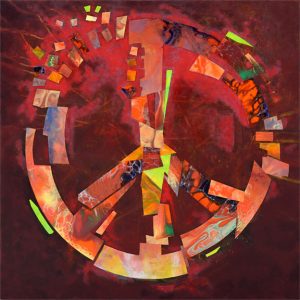
Occasionally a little bit of magic makes its way, sometimes by happenstance and sometimes on a hunch, into one of your experiments. When you are able to more predictably utilize these little bits of magic your work becomes more distinctive as well as more mysterious and interesting.
So I encourage everyone to consciously put aside a little bit of time in their studio to experiment. Try something on a whim! (but safely) Wonder what if…? And wonder what if again!
Artist Bio:
As an adult, I remember with a touch of amusement, the bitterness of not finding finger paints in my stocking on Christmas morning. Who could really blame Santa? But the simple joy of playing with those squishy pigments at grade school is a sensation that remains vivid for me today. Art and design have always been interests for me, but aside from relentless doodling, focused art-making was set aside after junior high for academics and athletics.
A work assignment away from home was the catalyst for my return to art-making. I thought I needed a pastime, but so enjoyed a drawing course that art became much more. Sketching and drawing shifted quickly to printmaking and painting, first with watercolours, then acrylics and oils, and finally with mixed media. My background in science led to study and experimentation with each medium until I naturally gravitated to the versatility of acrylics as a base medium with mixed media elements. And science has naturally become a familiar and prevailing ally to my artistic practice.
Science and art are never so far apart as our modern culture would make them seem. As an experimental artist, I see these “opposing” bodies of knowledge as deeply intertwingled. The aesthetics and science of composition, the theoretical and practical pursuit of a deep understanding of the interaction of textures, and the physics and chemistry of paint manipulation are three areas in which I am particularly involved. My work is inspired as often by a scientific principle or an experimental eureka moment as it is by an aesthetic vision.
If I hadn’t become a visual artist, I might have become a mad scientist.
Rick Rogers, ISAP, ASA, SWCA
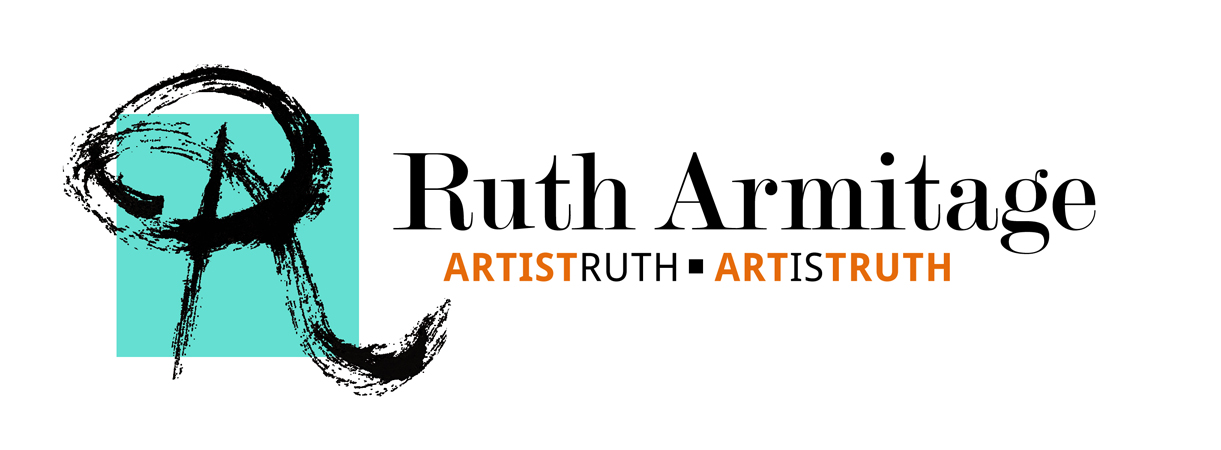
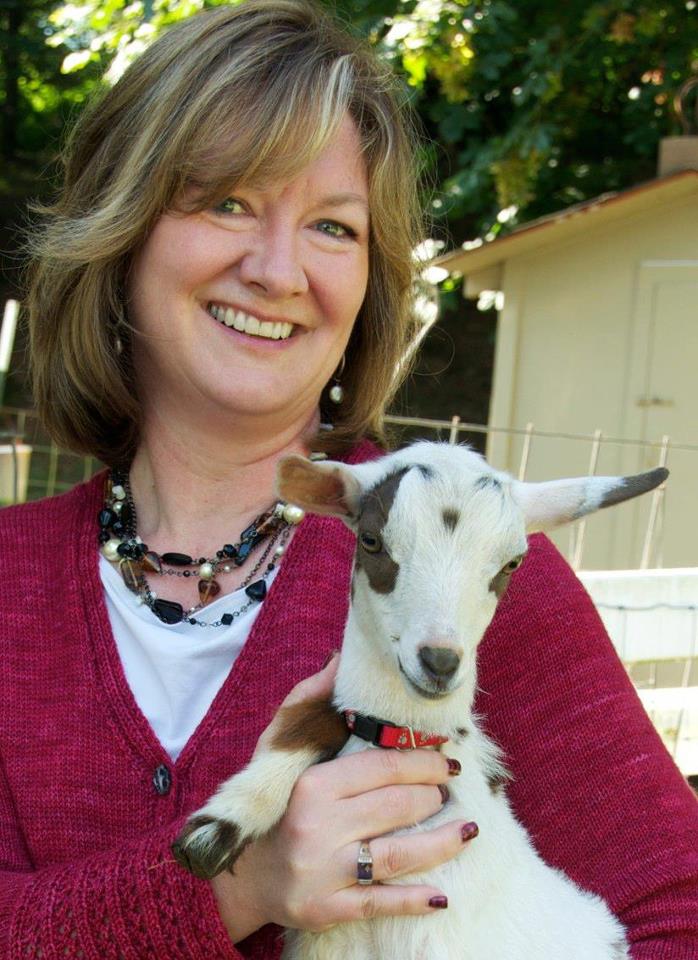
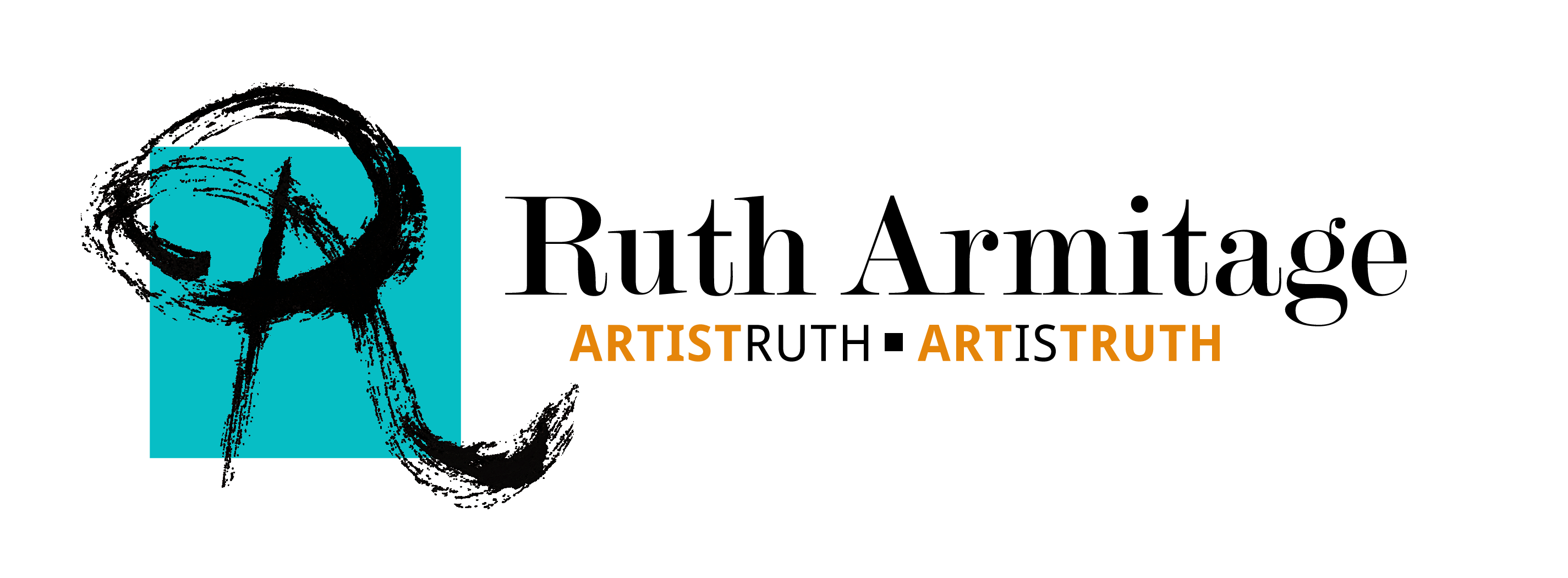
Thanks for inviting me to make this guest appearance Ruth!
Thanks for sharing!
Great story! Thanks for sharing!
Glad you enjoyed it, Jansi!
Thanks Jansi! Nice to meet you!
A very good read. Nice to know how you got to where you got to!
Thanks for taking the time to read and respond Teresa. Really appreciate your friendship!